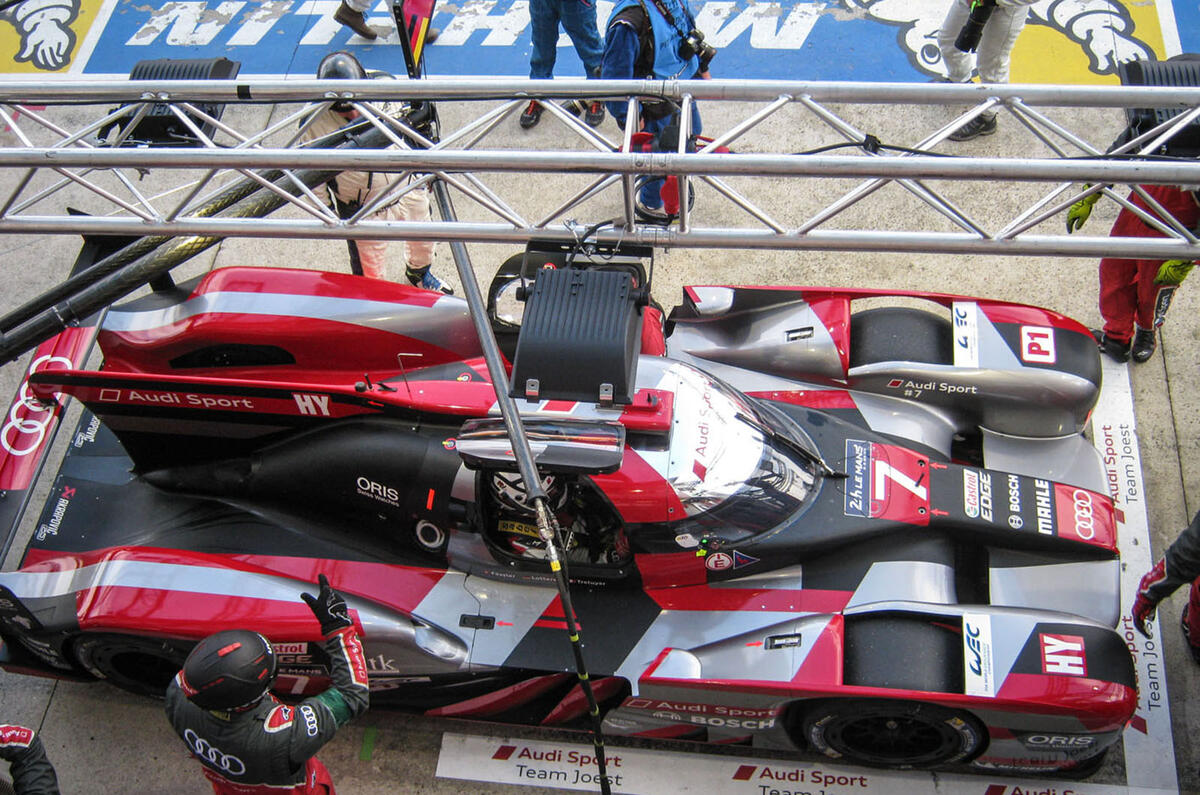Take a glance at the volume – and significance – of the breakdowns at this year’s Le Mans 24hrs race, and there could be some truth in this theory.
First the more prominent of Audi’s two R18s succumbed to a turbocharger problem after only a few race laps, scuppering its chances of getting onto the podium. There were other casualties throughout the race, too, the most dramatic of which had to be the loss of power suffered by Kazuki Nakajima’s Toyota alongside the pit lane on the final lap, which stole victory from him.
So have the cars become too complex? Both Audi and Toyota moved away from different storage systems to battery systems for 2016.
Before the race, Audi’s Allan McNish talked about the changes: “This may sound like a small change, but in terms of the packaging for the car it’s very different – working with the battery is different from working with the flywheel for us, and for Toyota it’s different from working with a super capacitator.
“So we’re both working towards gaining more understanding and experience in our cars.”
And, during the race, ex-Audi racer and five times Le Mans winner, Emanuele Pirro admitted the complexity of Le Mans racers has increased. “The cars are really complex, they’re now so sophisticated that they can suit, or not suit, a particular track, or even a specific corner,” he said.
But Pirro doesn’t hold this responsible for the problems suffered by the cars this year. He puts it down to plain old-fashioned luck.
“You can never assume you’ll win at Le Mans, no matter how much you prepare. We did three 30-hour tests with the R18s before the race, but they suffered really uncommon problems. We just didn’t have the luck this year,” he said.
“The margin between winning and losing is very small,” he concluded.
Claire Evans






Join the debate
Add your comment
diesel bore
Heart break for Toyota
More reliable than ever
The results show that 44 cars finished at Le Mans this year, from 60 starters. Five were not classified (including the Toyota which lost power on the last lap, although it did make it around to the end eventually) and 11 officially retired. Some of those retirements were due to accident damage, not reliability problems. That's a pretty good strike rate after 24 hours of racing, with weather which ranged from dry to very wet.
44 finishers is a new record for Le Mans – albeit from 60 starters instead of 55 or 56 in most years. Last year was the previous record, at 42 finishers. This trend suggests that cars are becoming ever more reliable (and/or repairable during the race), rather than less so.
Up until the last four minutes, the two leading cars from Toyota and Porsche were only about 30 seconds apart and still pushing flat-out, as they had been the whole race. GTE Pro was a a similar fight between Ford and Ferrari all the way to the end, with no opportunity for the teams to ease up and look after the cars. In years past, the margins would have been a lap or more and the leader would be cruising to the flag.